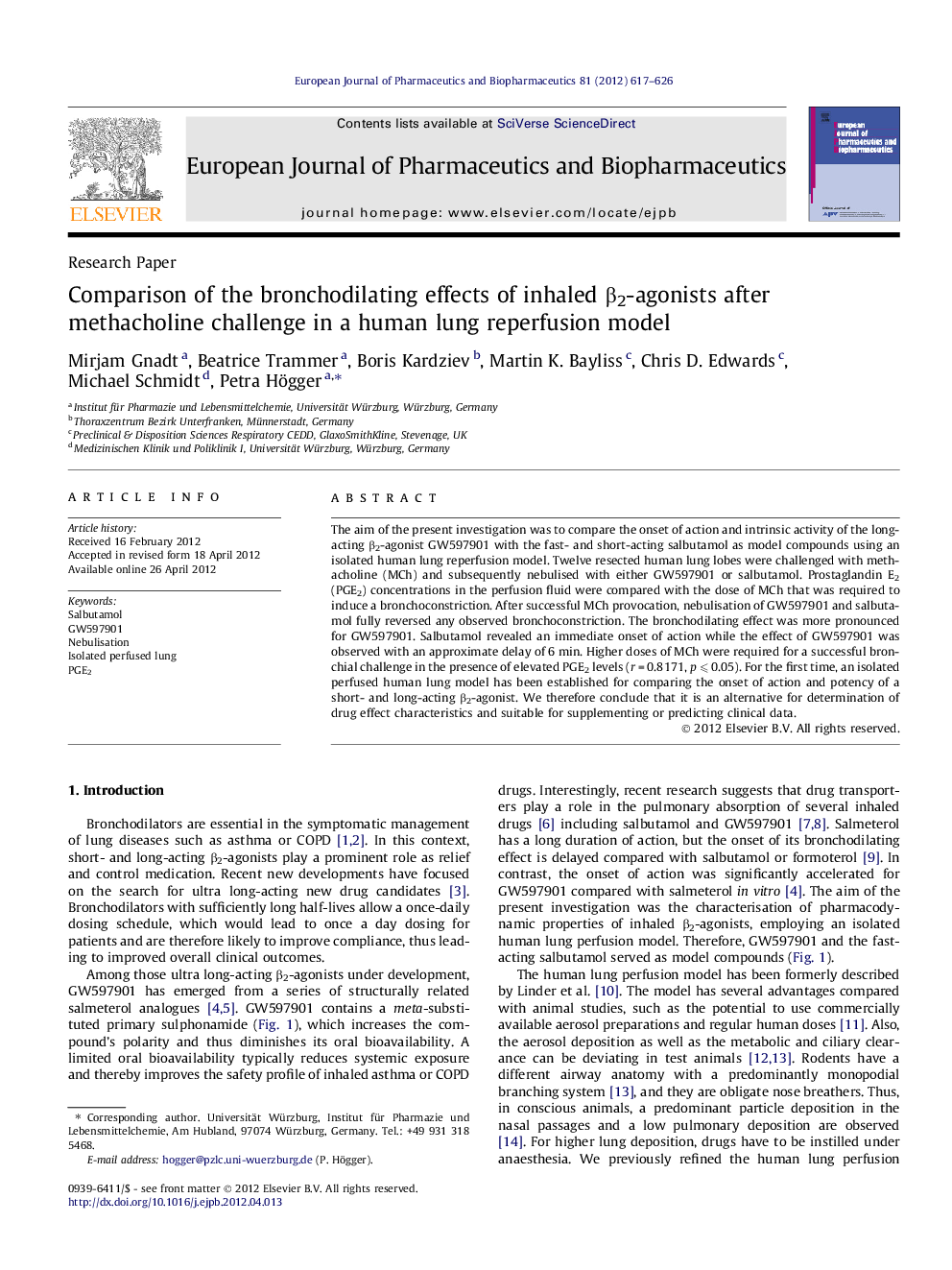| Article ID | Journal | Published Year | Pages | File Type |
|---|---|---|---|---|
| 2083956 | European Journal of Pharmaceutics and Biopharmaceutics | 2012 | 10 Pages |
The aim of the present investigation was to compare the onset of action and intrinsic activity of the long-acting β2-agonist GW597901 with the fast- and short-acting salbutamol as model compounds using an isolated human lung reperfusion model. Twelve resected human lung lobes were challenged with methacholine (MCh) and subsequently nebulised with either GW597901 or salbutamol. Prostaglandin E2 (PGE2) concentrations in the perfusion fluid were compared with the dose of MCh that was required to induce a bronchoconstriction. After successful MCh provocation, nebulisation of GW597901 and salbutamol fully reversed any observed bronchoconstriction. The bronchodilating effect was more pronounced for GW597901. Salbutamol revealed an immediate onset of action while the effect of GW597901 was observed with an approximate delay of 6 min. Higher doses of MCh were required for a successful bronchial challenge in the presence of elevated PGE2 levels (r = 0.8171, p ⩽ 0.05). For the first time, an isolated perfused human lung model has been established for comparing the onset of action and potency of a short- and long-acting β2-agonist. We therefore conclude that it is an alternative for determination of drug effect characteristics and suitable for supplementing or predicting clinical data.
Graphical abstractIsolated reperfused human lung lobes were successfully established for comparing the onset of action and potency of nebulised short- and long-acting β2-agonists after preceding methacholine challenge.Figure optionsDownload full-size imageDownload high-quality image (129 K)Download as PowerPoint slide
